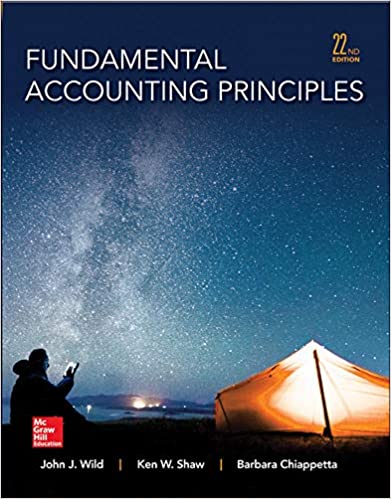
Fundamental Accounting Principles 22th Edition by John Wild ,Ken Shaw,Barbara Chiappetta
Edition 22ISBN: 978-0077862275
Fundamental Accounting Principles 22th Edition by John Wild ,Ken Shaw,Barbara Chiappetta
Edition 22ISBN: 978-0077862275 Exercise 34
The reason we use the words favorable and unfavorable when evaluating variances is made clear when we look at the closing of accounts. To see this, consider that (1) all variance accounts are closed at the end of each period (temporary accounts), (2) a favorable variance is always a credit balance, and (3) an unfavorable variance is always a debit balance. Write a half-page memorandum to your instructor with three parts that answer the three following requirements. (Assume that variance accounts are closed to Cost of Goods Sold.)
Required
1. Does Cost of Goods Sold increase or decrease when closing a favorable variance Does gross margin increase or decrease when a favorable variance is closed to Cost of Goods Sold Explain.
2. Does Cost of Goods Sold increase or decrease when closing an unfavorable variance Does gross margin increase or decrease when an unfavorable variance is closed to Cost of Goods Sold Explain.
3. Explain the meaning of a favorable variance and an unfavorable variance.
Required
1. Does Cost of Goods Sold increase or decrease when closing a favorable variance Does gross margin increase or decrease when a favorable variance is closed to Cost of Goods Sold Explain.
2. Does Cost of Goods Sold increase or decrease when closing an unfavorable variance Does gross margin increase or decrease when an unfavorable variance is closed to Cost of Goods Sold Explain.
3. Explain the meaning of a favorable variance and an unfavorable variance.
Explanation
1.
Since all favorable balances are cred...
Fundamental Accounting Principles 22th Edition by John Wild ,Ken Shaw,Barbara Chiappetta
Why don’t you like this exercise?
Other Minimum 8 character and maximum 255 character
Character 255


